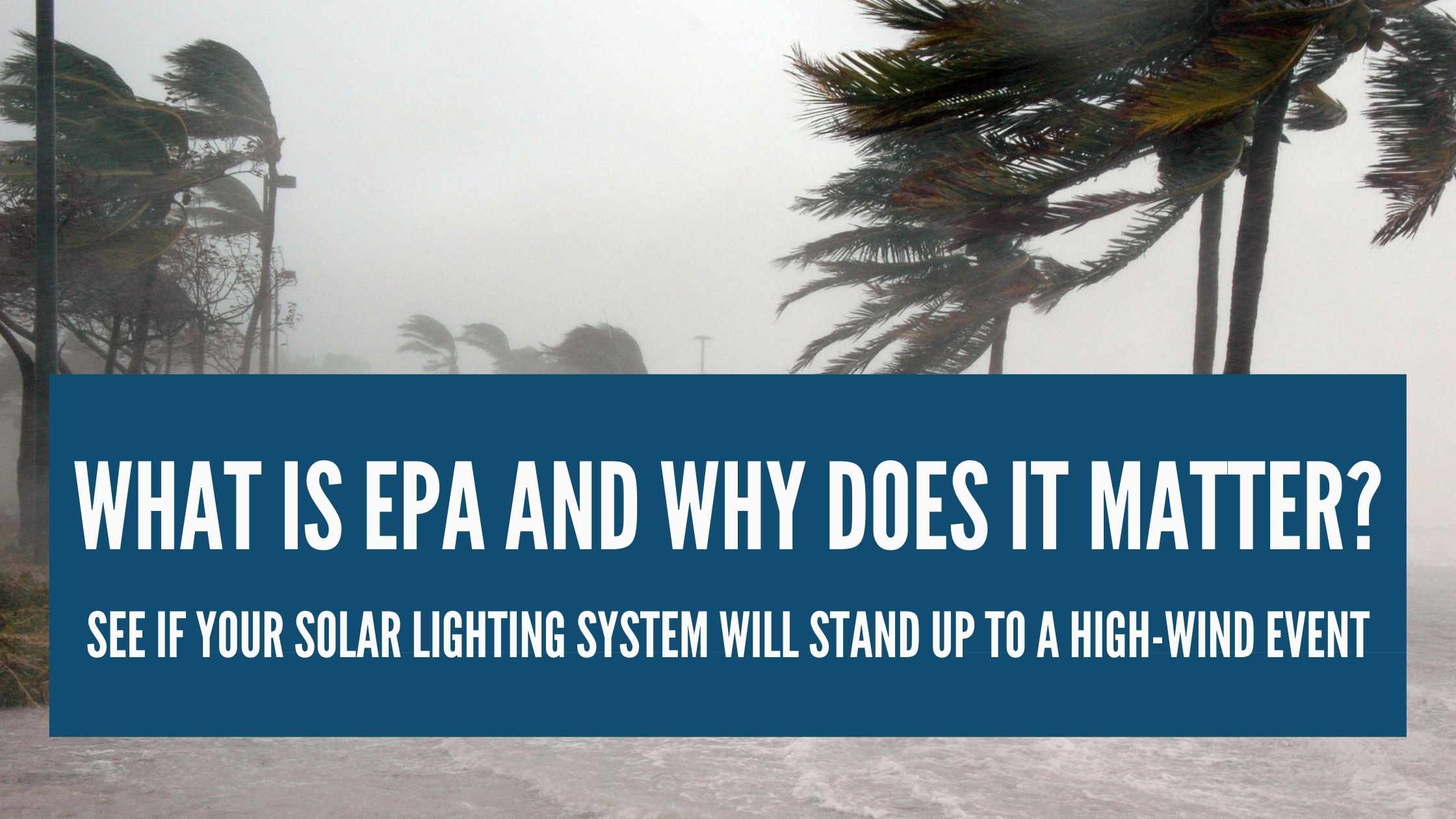EPA stands for Effective Projected Area and is used to help design poles for applications in the solar lighting industry, including solar lighting system design, construction, and installation. The EPA is calculated to help determine the strength of the pole needed to provide support to the solar lighting system during high or special wind events without falling over, causing liabilities. Let's take a closer look at what EPA is, how it is used in the industry, and what considerations need to be taken for system designs.
Understanding EPA
The EPA calculation takes into consideration the entire area that the solar power system and light fixture will take at the top of a pole. This helps manufacturers and engineers determine the size of the pole, the type of anchor bolts used to secure the pole to a concrete base, the embedment depth, and backfill requirements, and any other requirements of the installation to handle wind events such as hurricanes.
EPA and AASHTO Standards are used when calculating the requirements for the pole used in any solar lighting application. These two factors are used to determine the size of the pole required to ensure that the light will still be standing after a wind event up to a certain mile per hour with the weight and size of the solar at a certain height above grade.
The EPA of any system varies depending on the angles, shapes, and size of the systems. Even the shape of the pole can change the EPA of a complete system as square poles have a larger EPA than around poles. When designing a solar power system, the angle of the system affects both the EPA and the solar power production of the system. All these factors must be taken into consideration when designing a project as well as ensuring the installation will withstand for years to come.
Why does EPA matter?
So why does this all matter? When designing a system, the EPA of the complete system needs to be taken into consideration to ensure that the pole won’t be knocked over due to the large area at the top of the pole, etc. To find local AASHTO wind load ratings, you can look online or talk to your pole manufacturer, solar lighting specialist, or local engineering firm.
Different locations, such as mountainous areas, coastal areas, and areas around the Great Lakes have different wind speed requirements than other inland areas. Consulting a local authority is the best way to ensure you are purchasing equipment that can stand up to these windy areas. The best way to determine the requirements of the project is to:
- Determine the site location
-
Determine to total weight and EPA of the equipment
-
Determine the wind load requirement
-
Talk to your manufacturer to ensure the pole can hold up
Additional Engineering
If you are still unsure, additional engineering calculations can be performed for a fee, ranging from $500-$1500 for signed and sealed calculations. A reputable solar manufacturer will be able to provide this upon request and are handled by a third-party engineering firm.
In the end, talking to your solar lighting systems manufacturer or local engineering firm will help you determine what size and type of pole is needed to ensure your equipment will withstand local wind events. Learning about different options when it comes to poles will also educate you on the final decision when it comes to system design.


